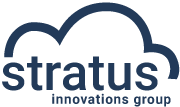How Edge Computing and Cloud Computing Work Together With the Internet of Things (IoT)

The possibility of cost-effective edge computing has only recently become a reality. Sensors and computing hardware are becoming smaller, more powerful, and cheaper. Meanwhile, machine learning and analytics have become exponentially more advanced in recent years. And both consumers and business leaders are beginning to realize the limitations of cloud computing.
At the same time, the need for edge computing has become greater. Manufacturers are facing an increasingly data-saturated industry. Externally, real-time fluctuations in market pricing for essential materials can impact production and operations. Internally, more advanced machinery and equipment are generating more data, and manufacturers often struggle to convert that data into practical, valuable insights. Edge computing can address these challenges.
Below, we’ll discuss what edge computing is, how it relates to the cloud, and why it’s important for your business.
What Is Edge Computing? And How Is It Different From the Cloud?
Like many buzzwords in the technology space, “edge computing” has a loose definition. In general, edge computing involves processing data close to its source (like on a device) as opposed to processing data remotely (like in the cloud).
For example, if you ask your cloud-based voice assistant a question, it sends your voice data to the cloud where the data gets analyzed. The assistant software accesses other data from the cloud to process an answer and send it back to your device. Processing and transmitting all this data takes time, especially since the physical hardware that makes up the cloud can be anywhere on the planet.
A faster way to answer your question would be to move some or all of that processing to the device right in front of you, at the “edge” of the computing space, close to the source of data. Putting more processing power in the hands of edge devices can result in major benefits:
- Faster data processing
- Less reliance on the cloud
- Fewer interruptions to service
- Increased privacy and security
- Lower bandwidth demands on networks
RELATED ARTICLE: What Is the Industrial Internet of Things (IIoT), and How Can It Drive Business Value?
Why Is Edge Computing Important for IoT Devices and the Industrial Internet of Things (IIoT)?
Given the benefits listed above, edge computing has direct applications for IIoT. Many manufacturing facilities and new construction projects lie in areas with limited internet connectivity. Reducing reliance on the cloud and bandwidth allows devices at these locations to function within a fully integrated IoT system while placing less demand on the network (and allowing businesses to get internet connectivity at a lower price point).
Edge computing could also improve machine performance and troubleshooting. If a device can detect what change needs to be made for optimization and make that change without having to interact with the cloud, machine efficiency will increase. And if a technician is troubleshooting a problem in the field, edge computing within the device can allow for real-time analysis of machinery instead of the technician having to wait for data to be transferred to the cloud, processed, and delivered.
Microsoft provides a full edge computing solution for IoT functionality via Microsoft Azure IoT Edge. This solution provides many pre-built software modules that contain significant IoT functionality, so a solution developer can just wire the modules into their various business logic components.
These are just a few of the applications for edge computing that can translate to real business value.
What Are the Business Benefits of Edge Computing?
The practical benefits of edge computing are diverse. Just a few prominent examples include:
- Lower maintenance and service costs for machinery
- Increased flexibility for operational expansion into new geographies
- Improved energy and material efficiency
- Greater reliability for equipment performance, data, and analytics
- Deeper operations insights
- New revenue stream potential (e.g., product-as-a-service models)
RELATED ARTICLE: IIoT Can Create New Revenue Streams for Manufacturers — Here’s How
Even now, companies are reaping the benefits of both edge and cloud computing, especially in the manufacturing industry. But there are also challenges associated with building a fully integrated and seamless environment where huge volumes of data from sensors, devices, hubs, and other sources can be collected, processed, and turned into actionable insights for both workers on the line and executives in the C-suite.
That’s where Stratus Innovations Group can help.
Get All the Benefits of IIoT and Edge Computing Without the Hassle
Our singular focus and purpose at Stratus Innovations Group is helping your business become more profitable and efficient. We have developed a fully customizable, proprietary Intelligent Factory Solution Offering to help your business gain all the benefits of IoT data, cloud computing, and edge computing without the time and expenditure of building your own solution from the ground up.
To speak with one of our experts, contact Stratus Innovations Group at 844-561-6721 or complete our simple online form. We’ll help you discover how you can use IoT to gain an edge over your competition.
